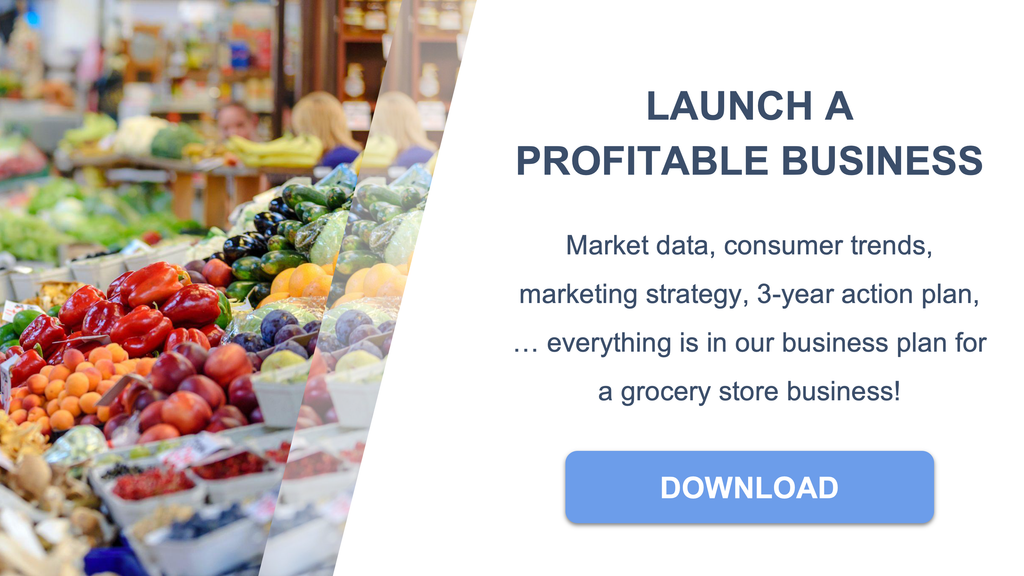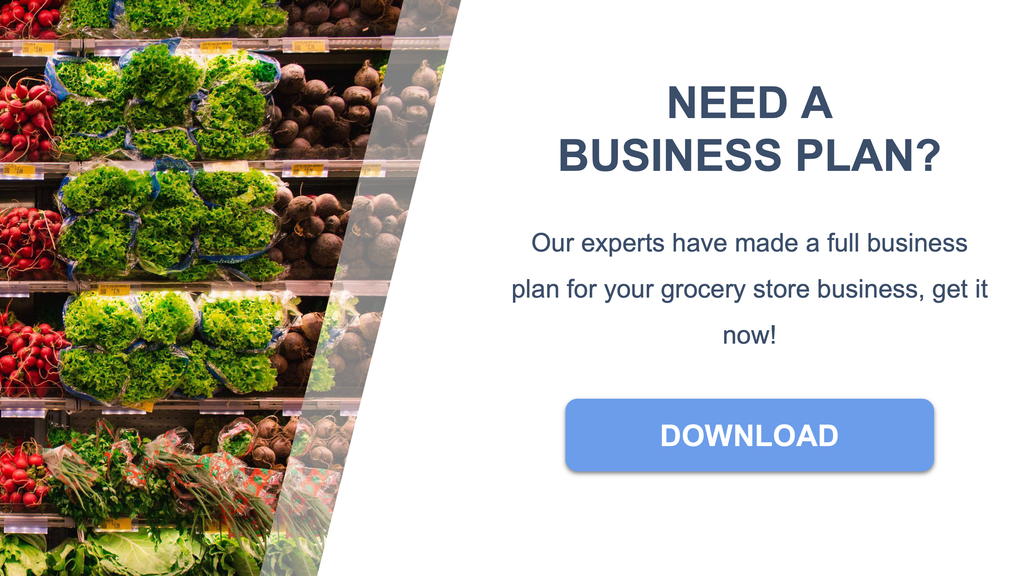
Get a watermark-free, fully customizable customer segmentation in our business plan for a grocery store
Knowing your shoppers is essential for the prosperity of any grocery store.
Let us walk you through the strategic approach of identifying and understanding your primary customer segments to enhance your product selection and marketing initiatives.
By recognizing who your shoppers are and what they value, you can ensure that your grocery store not only draws in a diverse clientele but also meets their shopping needs effectively.
And, if you're looking for a ready-made customer segmentation that's fully customizable, be sure to check out our business plan template designed specifically for grocery store ventures.
What is exactly a "customer segmentation"? Should you make one for your grocery store?
Customer segmentation is the practice of dividing your grocery store's potential and existing customers into distinct groups that share common characteristics.
Think of it as crafting a detailed portrait of who shops at your store, from basic demographics like age and income to more specific attributes such as shopping habits and dietary needs. The aim is to grasp the varied requirements and behaviors of your customer base, enabling you to customize your product selection, services, and marketing efforts to cater to each unique segment.
Why do grocery store owners and marketers invest time in customer segmentation? Simply put, not every shopper is the same.
Different groups have varying needs, preferences, and motivations for choosing your store over competitors. By pinpointing these segments, you can tailor your inventory, store layout, and promotional strategies to resonate with each group's unique wants and expectations.
For instance, a segment focused on health-conscious consumers might appreciate a wide range of organic products and wellness items, while budget shoppers might be more interested in discounts and value packs.
The advantages of effective customer segmentation, similar to what you'll discover in our business plan template designed for a grocery store, are significant and impactful. It leads to more precise marketing, which can result in better conversion rates and a more strategic allocation of your marketing budget.
Customizing your product offerings and services to align with the specific needs of different customer segments can boost shopper satisfaction and loyalty. Plus, understanding your customer segments can inform product sourcing, store design, and service improvements, positioning your grocery store as the go-to choice for a variety of shoppers.
Should you engage in customer segmentation if you're launching a new grocery store project? Definitely.
Knowing who your shoppers are and what they seek from the start can provide you with a substantial competitive advantage. It allows you to shape your store concept, product mix, and marketing plans with a clear focus on satisfying the needs of your target segments. This targeted approach can help you swiftly build a devoted customer base and stand out in a competitive marketplace.
Is customer segmentation useful for you? Undoubtedly. Whether you're in the initial planning phase or aiming to expand an existing store, understanding the different segments within your shopper base is crucial for making informed decisions. It affects everything from the types of sales promotions you run to the customer service training you provide your staff.
Furthermore, customer segmentation isn't a set-it-and-forget-it endeavor; it's a continuous process. As consumer trends shift and your business grows, regularly revisiting and refining your customer segments can ensure that your grocery store continues to meet the evolving needs and preferences of your customers.

How to segment customers for your grocery store?
To create customer segments for your grocery store, begin by examining your customer data to uncover patterns and common characteristics, such as shopping frequency, product preferences, and budget levels.
Next, categorize customers into segments based on these shared attributes to customize promotional activities and product selections to meet the specific needs and preferences of each group.
To streamline the process for you, here is a 10-step action plan to develop a meaningful customer segmentation for your grocery store.
| Step | Action | Details |
|---|---|---|
| 1 | Collect customer information | Gather data through loyalty cards, checkout interactions, and online shopping histories. |
| 2 | Examine buying patterns | Analyze which products are purchased together, and the frequency and volume of purchases. |
| 3 | Determine demographic factors | Group customers by age, family size, income level, etc. |
| 4 | Assess lifestyle and values | Identify customers who prefer organic, local, or specialty products. |
| 5 | Analyze geographic data | Segment based on proximity to the store and neighborhood demographics. |
| 6 | Develop customer profiles | Create detailed personas for each segment to better cater to their shopping needs. |
| 7 | Calculate customer lifetime value | Assess the long-term value of each segment to the store. |
| 8 | Identify priority segments | Decide which segments to prioritize based on their profitability and alignment with store objectives. |
| 9 | Customize promotional efforts | Design targeted marketing campaigns for each customer segment. |
| 10 | Review and adjust segments | Continuously evaluate and update segments to reflect evolving customer preferences and market trends. |
What are some examples of audiences and customer segments for a grocery store?
Below is a table with 10 examples of customer segments for a grocery store.
| Name of the Segment | Description | Preferences and Budget |
|---|---|---|
| Busy Families | Parents with children looking for convenient shopping options to balance their hectic schedules. | Medium budget, prefers a mix of ready-to-eat meals, bulk buying, and family-sized packaging. |
| Health-Conscious Shoppers | Individuals focused on maintaining a healthy lifestyle through organic, non-GMO, or low-calorie food options. | Medium to high budget, prefers organic produce, dietary supplements, and natural products. |
| Budget Shoppers | Customers looking for the best deals and savings on their grocery purchases. | Low to medium budget, prefers store brands, discounts, and loyalty programs. |
| Elderly Customers | Senior citizens who may need assistance and value convenience and accessibility in their shopping experience. | Low to medium budget, prefers senior discounts, smaller packaging, and easy-to-prepare foods. |
| Single Professionals | Working adults living alone with a focus on convenience, quality, and time-saving options. | Medium to high budget, prefers ready-to-cook meals, gourmet products, and premium brands. |
| Students | College and university students seeking affordable, quick, and easy food options. | Low budget, prefers instant meals, snack foods, and promotional deals. |
| Eco-Friendly Shoppers | Environmentally conscious consumers looking to reduce their carbon footprint through their purchasing choices. | Medium to high budget, prefers products with eco-friendly packaging, local produce, and bulk items to reduce waste. |
| Vegetarians and Vegans | Individuals who abstain from eating meat and/or animal products, seeking a variety of plant-based options. | Medium budget, prefers a wide selection of fruits, vegetables, meat substitutes, and dairy-free products. |
| Food Enthusiasts | Customers who enjoy cooking and experimenting with new recipes and flavors. | Medium to high budget, prefers international ingredients, spices, and specialty items. |
| Local Shoppers | Community members who prefer to support local farmers and businesses by purchasing locally sourced goods. | Varied budget, prefers locally produced and seasonal items, artisanal goods, and community-oriented products. |

Examples of customer segmentation for a grocery store
Below are three different (very concise) examples of customer segmentations tailored for a Health-Focused Grocery Store, a Budget-Friendly Supermarket, and a Gourmet Food Shop.
Health-Focused Grocery Store Customer Segmentation
| Customer Segment | Characteristics |
|---|---|
| Health-Conscious Shoppers | Seeks organic, non-GMO, and locally sourced products, values nutritional information and healthy options. |
| Fitness Enthusiasts | Looks for high-protein, low-carb items, and supplements to support an active lifestyle and fitness goals. |
| Dietary Restricted Individuals | Needs a variety of gluten-free, dairy-free, or vegan products, appreciates clear labeling and diverse choices. |
| Eco-Friendly Patrons | Prefers products with minimal packaging, interested in sustainable and environmentally friendly goods. |
Budget-Friendly Supermarket Customer Segmentation
| Customer Segment | Characteristics |
|---|---|
| Price-Sensitive Families | Looks for sales, discounts, and bulk buying options, values a one-stop shop for all household needs. |
| College Students | Seeks affordable instant meals and snacks, interested in loyalty programs and convenient shopping hours. |
| Value Hunters | Always on the lookout for the best deals and generic brands, appreciates a good bargain and cost savings. |
| Senior Citizens | May require budget-friendly options, appreciates senior discounts and easy-to-navigate store layouts. |
Gourmet Food Shop Customer Segmentation
| Customer Segment | Characteristics |
|---|---|
| Culinary Aficionados | Seeks high-quality, rare ingredients, values specialty items and knowledgeable staff. |
| Home Gourmet Cooks | Looks for premium oils, vinegars, and unique spices, interested in elevating home-cooked meals. |
| Gift Seekers | Needs luxurious and presentable food items for gifting, appreciates gift baskets and premium packaging. |
| Wine and Cheese Connoisseurs | Interested in a curated selection of wines and artisanal cheeses, values tasting events and pairings advice. |

You can also read our articles about:
- how to fill a Business Model Canvas for your grocery store
- how to study the competitors of your grocery store
- how to elaborate a marketing strategy for your grocery store
- how to open a grocery store (guide)
